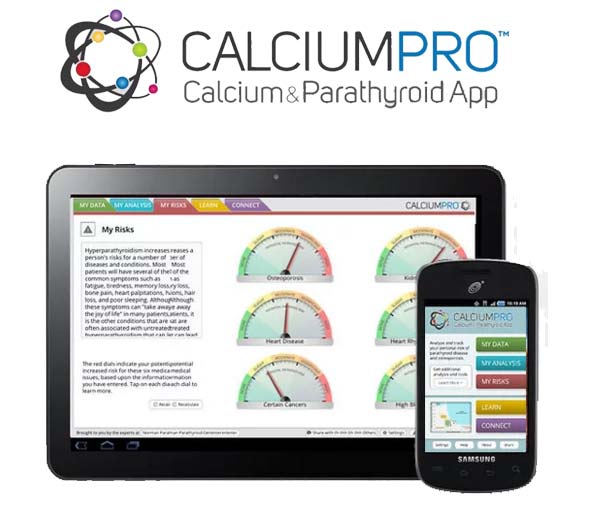Subtotal Parathyroidectomy in 5 Questions

Subtotal Parathyroidectomy in 5 questions; plus a bonus question you (probably) didn’t think of.
A subtotal parathyroidectomy is a phrase that describes one of the types of surgeries than can be performed to treat hyperparathyroidism. Hyperparathyroidism is a disease where the parathyroid glands are making too much of a specific hormone, called PTH. The gold standard for treating most cases of hyperparathyroidism is surgery, but there are many different surgical strategies out there.
Most people don’t know what a parathyroid gland is before they or a loved one gets diagnosed with hyperparathyroidism. Many people have a tough time getting the information they need to understand their disease, much less an operation they’ve never heard of before. So when they are told the surgical plan is a subtotal parathyroidectomy, it is inevitable that they will have questions. So here are the questions patients most commonly ask us about subtotal parathyroidectomies, plus a bonus question that they don’t ask, but is still important in their care none the less.
What is a Subtotal Parathyroidectomy?
A subtotal parathyroidectomy is a parathyroid surgery during which all but a portion of one parathyroid gland is removed. Most people have four parathyroid glands, so in a standard subtotal parathyroidectomy three and a half glands are removed. The remaining portion of a parathyroid gland is called a remnant, and it remains on its original blood supply, in its original location. The goal of the surgery is to leave a remnant that is roughly the size of a normal parathyroid gland.
Some very rare patients have more than four parathyroid glands, and some people have had surgeries in the past that removed one or more of their parathyroid glands. In any situation, the goal of a subtotal parathyroidectomy is to find all the parathyroid glands a patient has, pick the best one to leave in, trim this gland down to a normal size, confirm that the remnant is alive, and then remove the other parathyroid glands.
Picking the best glad is really important, but we’ll get to that later…
Why is a Subtotal Parathyroidectomy Chosen?
A subtotal parathyroidectomy is the surgery of choice when a patient has parathyroid hyperplasia. This is a condition where all of the parathyroid glands are abnormally enlarged, and making too much hormone. There are three types of hyperparathyroidism, primary, secondary and tertiary. Hyperplasia can happen occasionally in primary hyperparathyroidism, and happens in nearly all cases of secondary and tertiary hyperparathyroidism.
Because in hyperplasia all four parathyroid glands are enlarged, if a surgery leaves in one or more of the parathyroid glands, then the remaining parathyroid tissue will be too large, overactive and the PTH will remain high. So the solution is to leave less than one parathyroid gland remaining. That is called the remnant, and will be responsible for making all the PTH the patient will have in the future.
What if Hyperparathyroidism Re-occurs?
In some cases hyperparathyroidism comes back years after a successful subtotal parathyroidectomy. This is because some patients have underlying conditions that cause the parathyroid tissue to grow over time. That is OK, surgeons can help!
When the parathyroid tissue increases in size, the PTH goes up and the patient can get sick again. In this case the surgeon goes back into the neck, and performs another subtotal parathyroidectomy. During this operation there is only one parathyroid gland remaining, and it is “trimmed down” back to the size of a normal parathyroid gland. Experienced surgeons will mark the locations of these glands, describe them in detail or draw pictures during the first operation, making it easy to find them during a possible second case.
What is a Total Parathyroidectomy with Autotransplantation?
So now we’ve covered a subtotal parathyroidectomy, which will leave part of one gland behind, alive and functioning. What about taking all four glands out and putting a piece in a muscle? This is a surgical option to deal with hyperplasia called a total parathyroidectomy, meaning to remove all of the parathyroid glands; which goes with an autotransplantation, meaning a portion of one of the glands is put into a muscle. The muscle chosen is often in an arm or the neck, although other muscles are possible. This is a surgery that is offered to many patients who are suspected to have hyperplasia, or an option that people frequently read about even if it hasn’t been offered to them. We are asked about this operation all the time.
The reason that surgeons in the past preferred a total parathyroidectomy to a subtotal parathyroidectomy is that they were afraid to do a re-operation in the neck. It is possible for parathyroid disease to re-occur after a successful surgery for hyperplasia. If there is a remnant in the neck, as is the case after a subtotal parathyroidectomy, then the surgeon has to go back into the neck, where there are delicate structures, but now there is also scar tissue. Surgeons who do a small volume of re-operative neck cases have a higher chance of having a surgical complication while doing re-operative neck surgeries. In this case an autotransplantation into the forearm means that any future surgery will avoid all these critical neck structures, and therefore decrease the risk of complications.
Why not do a total parathyroidectomy with autotransplantation?
A total parathyroidectomy with autotransplantation has its own risks, that are different from a subtotal parathyroidectomy. After a total parathyroidectomy all patients will experience hypoparathyroidism, a condition where the PTH and Calcium levels are very low. This requires supplementation with calcium and vitamin D that is frustrating but manageable for most people. However for some patients, particularly with secondary or tertiary hyperparathyroidism, this condition can actually be dangerous and require management in a hospital. Although this condition is usually transient, meaning it will get better over a few months for most patients; for some people the condition will sadly be permanent. This is because no matter how properly the surgery was done, sometimes the autotransplanted parathyroid tissue just doesn’t work in its new home.
In addition there are special risks to re-operating on auto-transplanted parathyroid tissue, that are not risks when operating on a remnant associated with a subtotal parathyroidectomy. When put into a muscle the parathyroid tissue is not always one discrete mass that is easy to re-operate on. It is often a scattered collection of both visible and microscopic chunks of parathyroid tissue. Therefore it is impossible to know how much of the parathyroid tissue you are taking out. This can lead to multiple re-operations with loss of muscle tissue, or it can lead to permanent hypoparathyroidism.
For surgeons who do a high volume of re-operative neck surgeries, the risk of complications in a re-operative subtotal parathyroidectomy is very low, well less than 1%. So they are more comfortable leaving a remnant in the neck, which they can readily manage in the future for the small number of patients who have a recurrence. Doing so avoids the risks of a total parathyroidectomy with autotransplantation, that are unavoidable no matter how careful you are. The bottom line is that experience and proper surgical technique can minimize the risks of re-operation if someone had a subtotal parathyroidectomy. But no amount of experience or perfect surgical technique can remove the risks inherent to an autotransplantation. This is why high volume parathyroid surgeons usually prefer a subtotal parathyroidectomy if possible, and use total parathyroidectomies with autotransplantation in certain specific circumstances.




